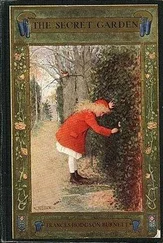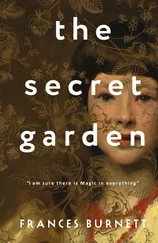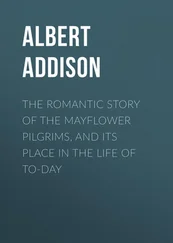“What a goodnatured creature that is!” she said.
Lord Walderhurst lifted his monocle and inserted it in his unillumined eye. He also looked across the room. Emily wore the black evening dress which gave such opportunities to her square white shoulders and firm column of throat; the country air and sun had deepened the colour on her cheek, and the light of the nearest lamp fell kindly on the big twist of her nut-brown hair, and burnished it. She looked soft and warm, and so generously interested in her pupil’s progress that she was rather sweet.
Lord Walderhurst simply looked at her. He was a man of but few words. Women who were sprightly found him somewhat unresponsive. In fact, he was aware that a man in his position need not exert himself. The women themselves would talk. They wanted to talk because they wanted him to hear them.
Mrs. Ralph talked.
“She is the most primeval person I know. She accepts her fate without a trace of resentment; she simply accepts it.”
“What is her fate?” asked Lord Walderhurst, still gazing in his unbiassed manner through his monocle, and not turning his head as he spoke.
“It is her fate to be a woman who is perfectly well born, and who is as penniless as a charwoman, and works like one. She is at the beck and call of any one who will give her an odd job to earn a meal with. That is one of the new ways women have found of making a living.”
“Good skin,” remarked Lord Walderhurst, irrelevantly. “Good hair—quite a lot.”
“She has some of the nicest blood in England in her veins, and she engaged my last cook for me,” said Mrs. Ralph.
“Hope she was a good cook.”
“Very. Emily Fox-Seton has a faculty of finding decent people. I believe it is because she is so decent herself”—with a little laugh.
“Looks quite decent,” commented Walderhurst. The knitting was getting on famously.
“It was odd you should see Sir Bruce Norman that day,” Agatha Slade was saying. “It must have been just before he was called away to India.”
“It was. He sailed the next day. I happen to know, because some friends of mine met me only a few yards from your picture and began to talk about him. I had not known before that he was so rich. I had not heard about his collieries in Lancashire. Oh!”—opening her big eyes in heartfelt yearning,—“how I wish I owned a colliery! It must be so nice to be rich!”
“I never was rich,” answered Lady Agatha, with a bitter little sigh. “I know it is hideous to be poor.”
“ I never was rich,” said Emily, “and I never shall be. You”—a little shyly—“are so different.”
Lady Agatha flushed delicately again.
Emily Fox-Seton made a gentle joke. “You have eyes like blue flowers,” she said. Lady Agatha lifted the eyes like blue flowers, and they were pathetic.
“Oh!” she gave forth almost impetuously, “sometimes it seems as if it does not matter whether one has eyes or not.”
It was a pleasure to Emily Fox-Seton to realise that after this the beauty seemed to be rather drawn toward her. Their acquaintance became almost a sort of intimacy over the wool scarf for the deep-sea fisherman, which was taken up and laid down, and even carried out on the lawn and left under the trees for the footmen to restore when they brought in the rugs and cushions. Lady Maria was amusing herself with the making of knitted scarfs and helmets just now, and bits of white or gray knitting were the fashion at Mallowe. Once Agatha brought hers to Emily’s room in the afternoon to ask that a dropped stitch might be taken up, and this established a sort of precedent. Afterward they began to exchange visits.
The strenuousness of things was becoming, in fact, almost too much for Lady Agatha. Most unpleasant things were happening at home, and occasionally Castle Clare loomed up grayly in the distance like a spectre. Certain tradespeople who ought, in Lady Claraway’s opinion, to have kept quiet and waited in patience until things became better, were becoming hideously persistent. In view of the fact that Alix’s next season must be provided for, it was most awkward. A girl could not be presented and properly launched in the world, in a way which would give her a proper chance, without expenditure. To the Claraways expenditure meant credit, and there were blots as of tears on the letters in which Lady Claraway reiterated that the tradespeople were behaving horribly. Sometimes, she said once in desperation, things looked as if they would all be obliged to shut themselves up in Castle Clare to retrench; and then what was to become of Alix and her season? And there were Millicent and Hilda and Eve.
More than once there was the mist of tears in the flower-blue eyes when Lady Agatha came to talk. Confidence between two women establishes itself through processes at once subtle and simple. Emily Fox-Seton could not have told when she first began to know that the beauty was troubled and distressed; Lady Agatha did not know when she first slipped into making little frank speeches about herself; but these things came about. Agatha found something like comfort in her acquaintance with the big, normal, artless creature—something which actually raised her spirits when she was depressed. Emily Fox-Seton paid constant kindly tribute to her charms, and helped her to believe in them. When she was with her, Agatha always felt that she really was lovely, after all, and that loveliness was a great capital. Emily admired and revered it so, and evidently never dreamed of doubting its omnipotence. She used to talk as if any girl who was a beauty was a potential duchess. In fact, this was a thing she quite ingenuously believed. She had not lived in a world where marriage was a thing of romance, and, for that matter, neither had Agatha. It was nice if a girl liked the man who married her, but if he was a well-behaved, agreeable person, of good means, it was natural that she would end by liking him sufficiently; and to be provided for comfortably or luxuriously for life, and not left upon one’s own hands or one’s parents’, was a thing to be thankful for in any case. It was such a relief to everybody to know that a girl was “settled,” and especially it was such a relief to the girl herself. Even novels and plays were no longer fairy-stories of entrancing young men and captivating young women who fell in love with each other in the first chapter, and after increasingly picturesque incidents were married in the last one in the absolute surety of being blissfully happy forevermore. Neither Lady Agatha nor Emily had been brought up on this order of literature, nor in an atmosphere in which it was accepted without reservation.
They had both had hard lives, and knew what lay before them. Agatha knew she must make a marriage or fade out of existence in prosaic and narrowed dulness. Emily knew that there was no prospect for her of desirable marriage at all. She was too poor, too entirely unsupported by social surroundings, and not sufficiently radiant to catch the roving eye. To be able to maintain herself decently, to be given an occasional treat by her more fortunate friends, and to be allowed by fortune to present to the face of the world the appearance of a woman who was not a pauper, was all she could expect. But she felt that Lady Agatha had the right to more. She did not reason the matter out and ask herself why she had the right to more, but she accepted the proposition as a fact. She was ingenuously interested in her fate, and affectionately sympathetic. She used to look at Lord Walderhurst quite anxiously at times when he was talking to the girl. An anxious mother could scarcely have regarded him with a greater desire to analyse his sentiments. The match would be such a fitting one. He would make such an excellent husband—and there were three places, and the diamonds were magnificent. Lady Maria had described to her a certain tiara which she frequently pictured to herself as glittering above Agatha’s exquisite low brow. It would be infinitely more becoming to her than to Miss Brooke or Mrs. Ralph, though either of them would have worn it with spirit. She could not help feeling that both Mrs. Ralph’s brilliancy and Miss Brooke’s insouciant prettiness were not unworthy of being counted in the running, but Lady Agatha seemed somehow so much more completely the thing wanted. She was anxious that she should always look her best, and when she knew that disturbing letters were fretting her, and saw that they made her look pale and less luminous, she tried to raise her spirits.
Читать дальше












